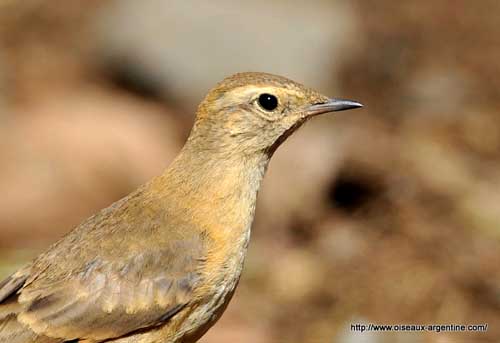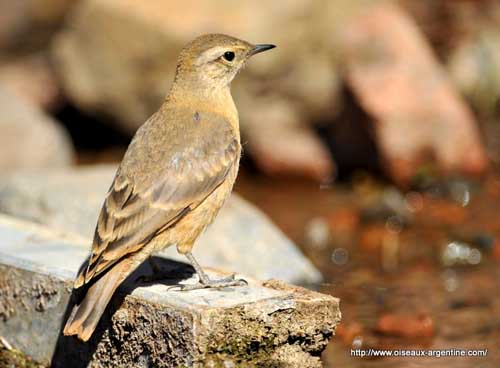
Fr: Géositte mineuse
All : Patagonienerdhacker
Esp : Caminera, Caminera Común, Minero, Minero argentino, Minero Común
Ital : Minatore comune
Nd: Gewone Holengraver
Sd: Minerare
Port: Curriqueiro
Photographers:
Jean Michel Fenerole
Photos d’Oiseaux du monde
Patrick Ingremeau
TAMANDUA
Philippe et Aline Wolfer
GALERIE
Text by Nicole Bouglouan
Sources:
HANDBOOK OF THE BIRDS OF THE WORLD Vol 8 By Josep del Hoyo-Andrew Elliott-David Christie - Lynx Edicions - ISBN: 8487334504
BIRDS OF SOUTH AMERICA – Passerines - by Robert S. Ridgely and Guy Tudor – HELM Field Guides – ISBN: 9781408113424
BirdLife International (BirdLife International)
Wikipedia, la enciclopedia libre
Neotropical Birds – Cornell Lab of Ornithology
Common Miner
Geositta cunicularia
Passeriforme Order – Furnariidae Family
BIOMETRICS:
Length: 14-17 cm
Weight: 20-34 gr
DESCRIPTION:
The species of genus Geositta have recently been separated from the family Furnariidae, and classified in the family Scleruridae. All these birds are known for their long burrows where they nest. However, the Common Miner is still classified here in the Furnariidae.
The adult of nominate race has dull greyish-brown upperparts with fine pale edging. Wings are brownish, and wing-coverts show dull, pale buff tips. Primaries show a pale rufous area forming a broad wingbar.
The dark tail is slightly forked, with paler base, mostly buff-whitish. Uppertail-coverts are tipped pale brownish. Outer rectrices show variable tones with the outer web of the outermost feathers almost white.

On the underparts, the throat is whitish. The breast is buff-white and shows brownish, wavy streaks. The belly is pale buffy-white, whereas the flanks are slightly washed pale cinnamon. Undertail-coverts are whitish.
On the pale brownish-grey head, we can see a broad whitish supercilium and an indistinct darker postocular line, and a moustachial streak.
The fairly long, slightly decurved bill is black or brown, and may have pale base to the lower mandible. The eyes are brown to yellowish-brown. Legs and feet are dark grey to black.
Both sexes are similar, but the juvenile is duller.
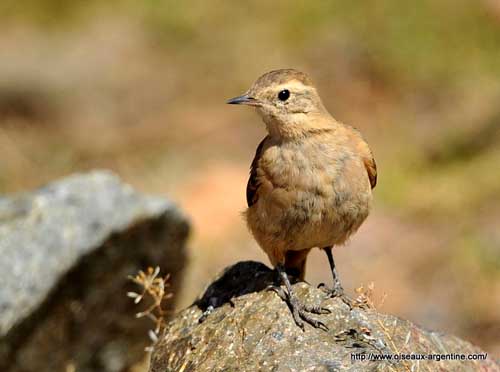
We can find about nine subspecies which vary in size and weight, and paleness of plumage.
The birds of Peru, Bolivia and N Chile altiplano are greyish-brown above with buffy supercilium. In flight, the flight feathers are mainly pale rufous, whereas the tail is dusky with pale buff base. Underparts are buffy-white with indistinct brownish streaks on breast.
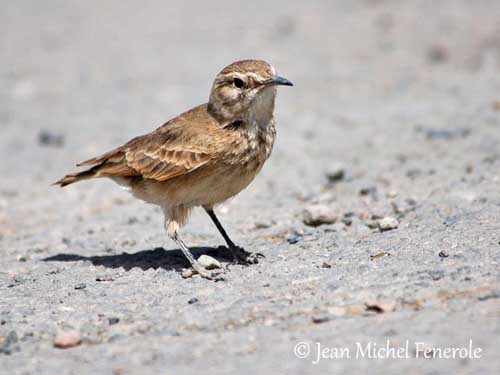
The birds of austral regions are duller with less rufous wings and narrower pale tail base. The breast shows more conspicuous streaking.
The coastal birds of S Peru and N Chile are smaller, sandier above and whiter below.
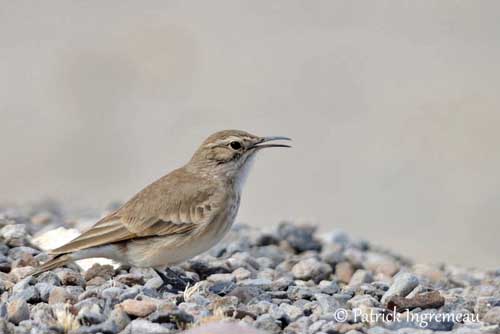
VOICE: SOUNDS BY XENO-CANTO
The Common Miner in flight gives high-pitched “keep” or sweet “pip”. The song usually given in flight too is a slow trilled series of several musical notes “de-dirr-rr-rrr”. The song may vary according to the range.
HABITAT:
The Common Miner frequents open plains, hillsides and sandy areas, including coastal dunes with sparse vegetation. It is found in a variety of open habitats with short grass, rocks and scattered shrubs. They need suitable sandy areas for their burrows. This species is visible from sea-level up to 5000 metres of elevation.
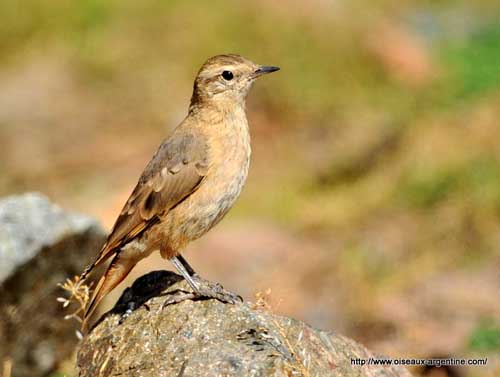
RANGE:
The Common Miner is common in most parts of Chile, Argentina and Uruguay, also in some areas in Peru and Bolivia, and in S Brazil. It is also present in Tierra del Fuego.
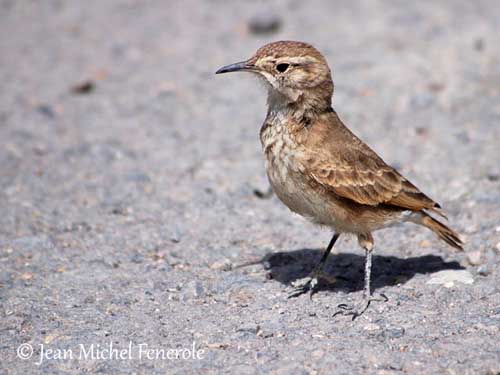
BEHAVIOUR:
The Common Miner feeds mainly on arthropods such as Diptera and Coleoptera, including eggs and larvae. It also takes some seeds. It forages on the ground, singly or in pairs. This is a terrestrial, exclusively diurnal species. The long, decurved bill is used to probe into cavities while searching for preys.
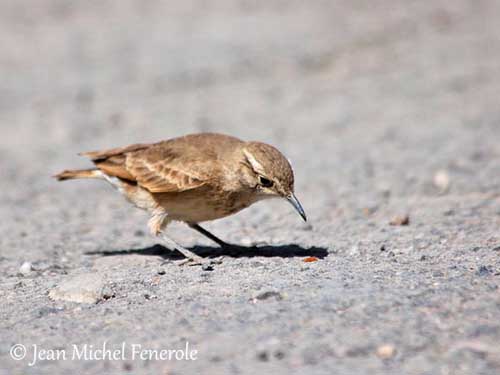
They sometimes perch on fences or low shrubs. The non-breeding birds often gather in small groups.
They are territorial throughout the year, and probably remain within their small area. They often occur in pairs, and pair-bonds are maintained outside the breeding season.
The courtship behaviour of the Common Miner is poorly known. However, other species of genus Geositta sing and perform wing-raising displays as advertising signals for breeding territory. While singing, they raise the wings to enhance the rufous wing pattern. Short display flights may occur too, with hovering above the ground while singing.
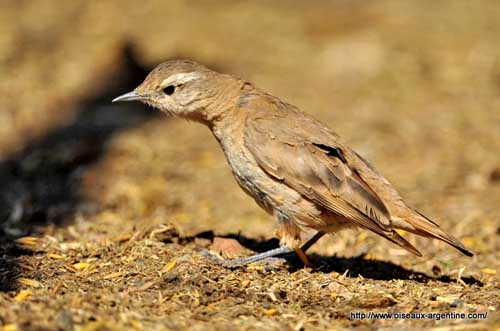
The Common Miner nests in burrow dug into sandy soil. That is difficult to know if the birds excavate the burrow themselves, or if they use and arrange burrows dug by other animal species. Such burrows are usually fairly long, and it would appear that several birds excavate themselves.
The Common Miner is largely resident in its range, with some altitudinal post-breeding movements. Some birds from extreme south (nominate race) migrate northwards.
FLIGHT:
The Common Miner prefers running to escape a danger, but finally, it takes off and flies fast and low, often while singing. However, the long wings and large primary extensions of the miners allow them to perform long flights between their foraging sites.
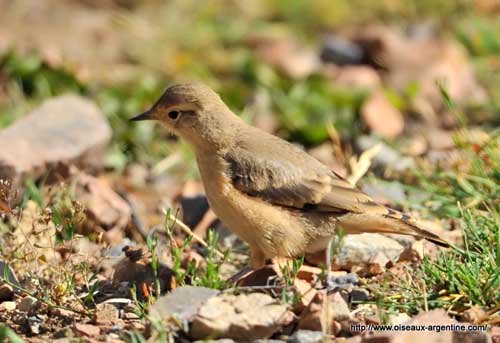
REPRODUCTION:
The Common Miner breeds usually during austral spring and summer, but the season may vary according to the range. This species produces two broods per year, sometimes only one in some regions.
They are probably monogamous. They nest in burrows. The horizontal tunnel of 50 cm up to 3 metres long and more is excavated by both sexes in sandy bank, often in sloping ground. The nest is at the end of the tunnel. The floor of the nest-chamber is padded with grasses, flowers, rootlets, animal hairs and feathers.
The female usually lays 2-3 white eggs. Both parents share the incubation during about two weeks. They also feed the chicks which leave the nest about 18-20 days after hatching.
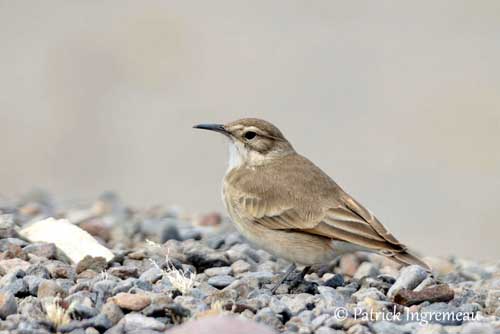
DIET:
The Common Miner feeds mainly on arthropods, including eggs and larvae, and some seeds. It forages on the ground and probes into cavities with the long, decurved bill.
PROTECTION / THREATS / STATUS:
The Common Miner can be common to locally abundant in suitable habitat. The species is threatened by extensive development of beach areas in some coastal parts of the range, and continuing decline occurs. However, the Common Miner is not currently globally threatened.
